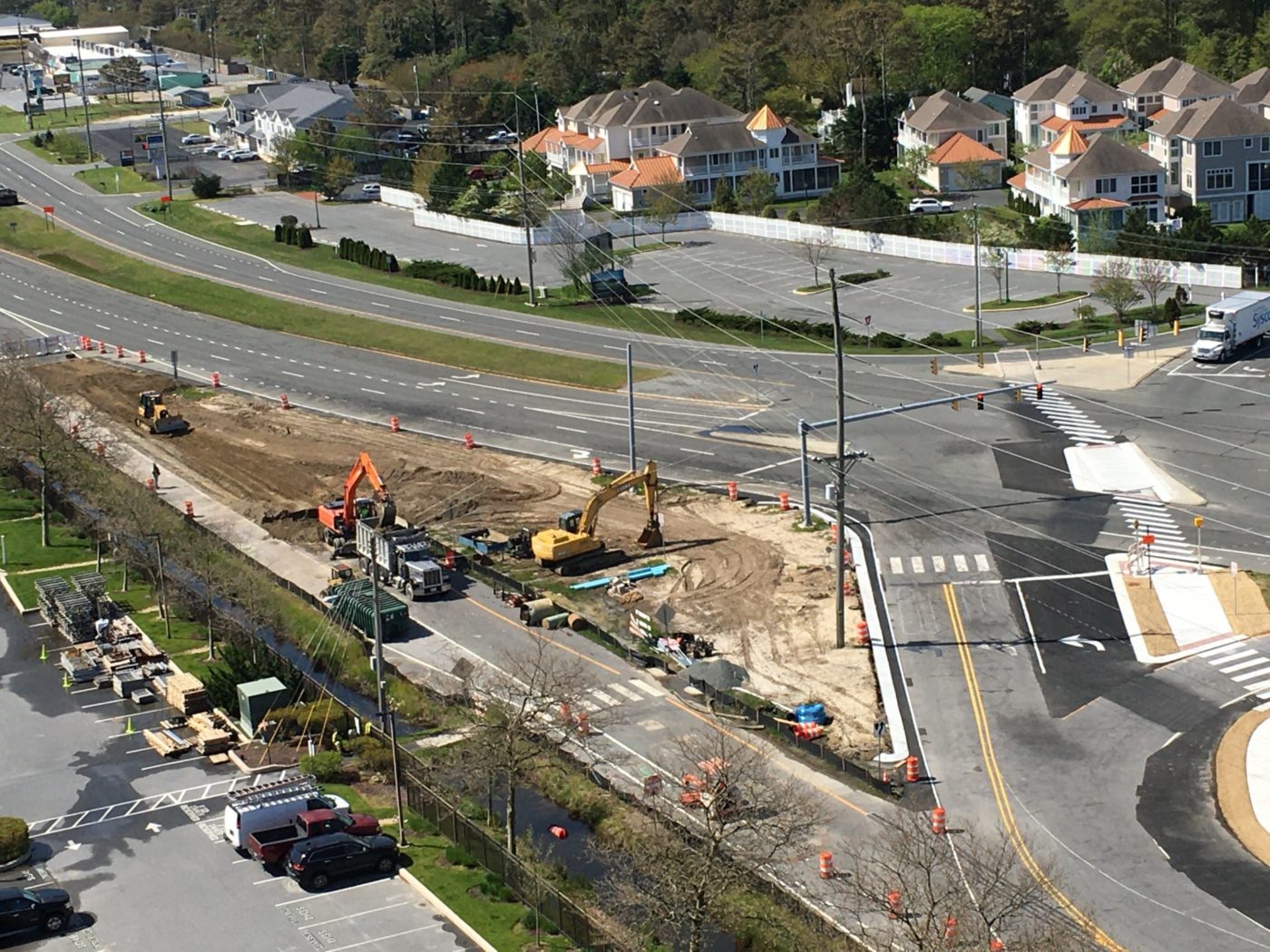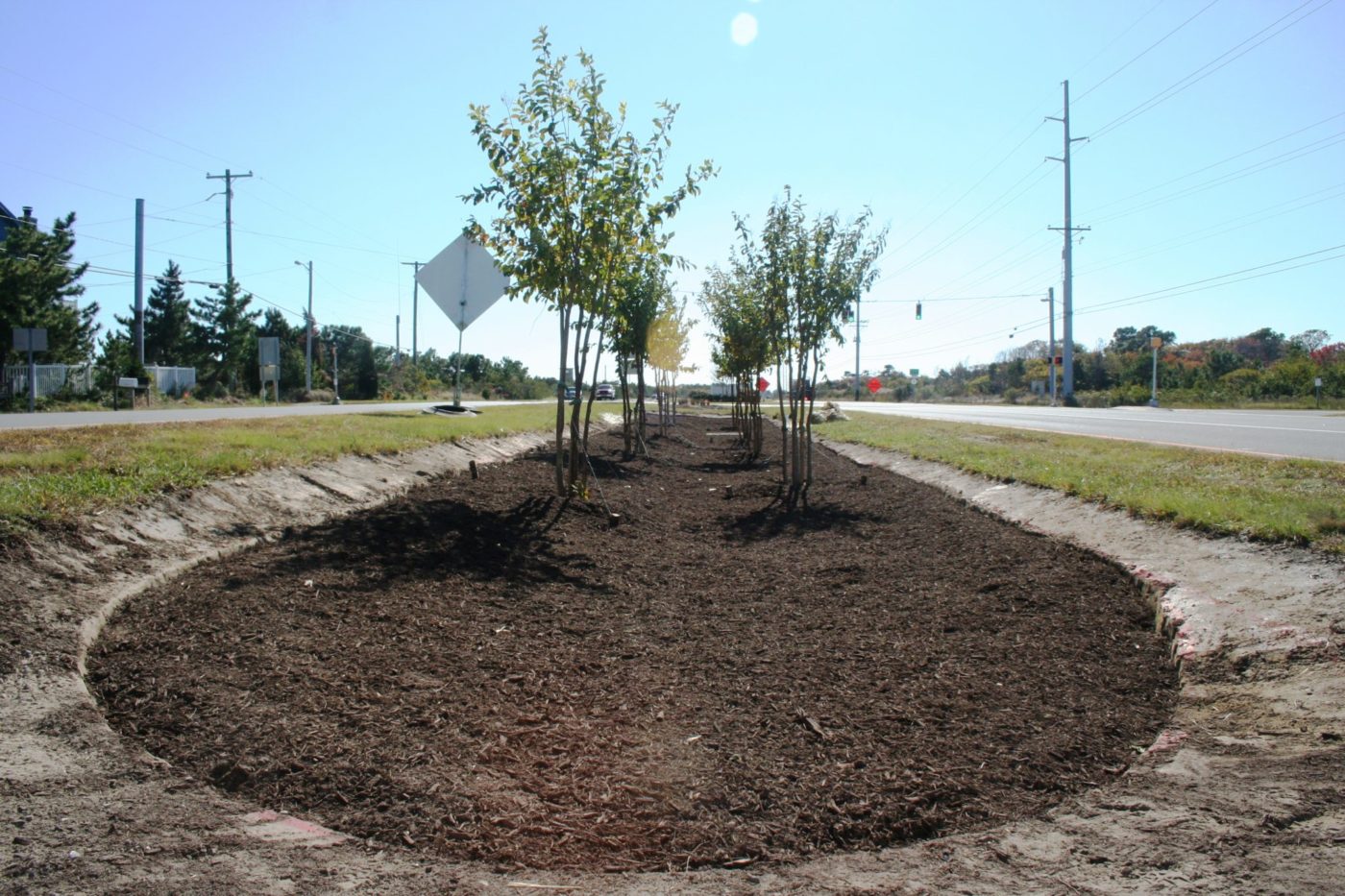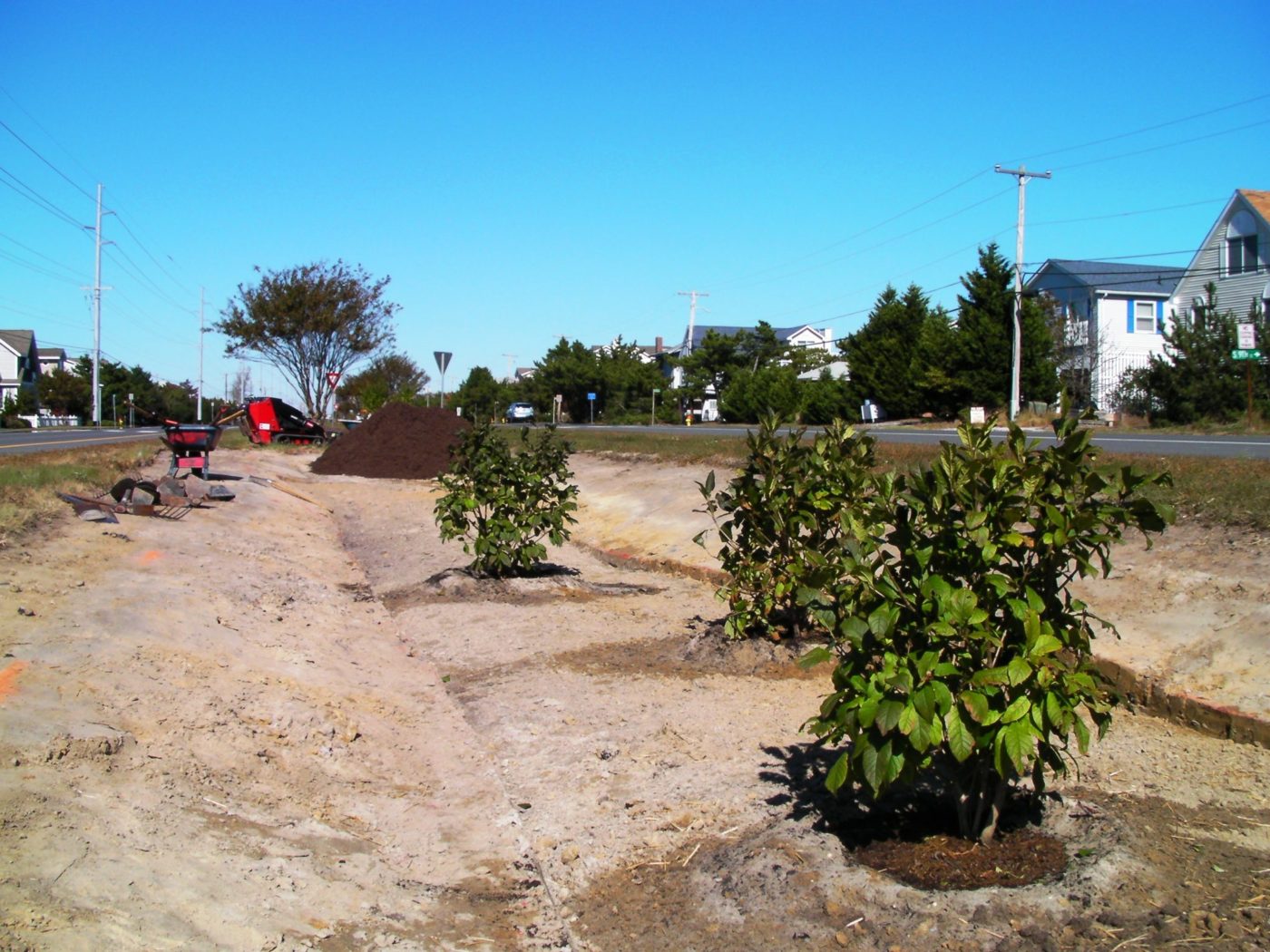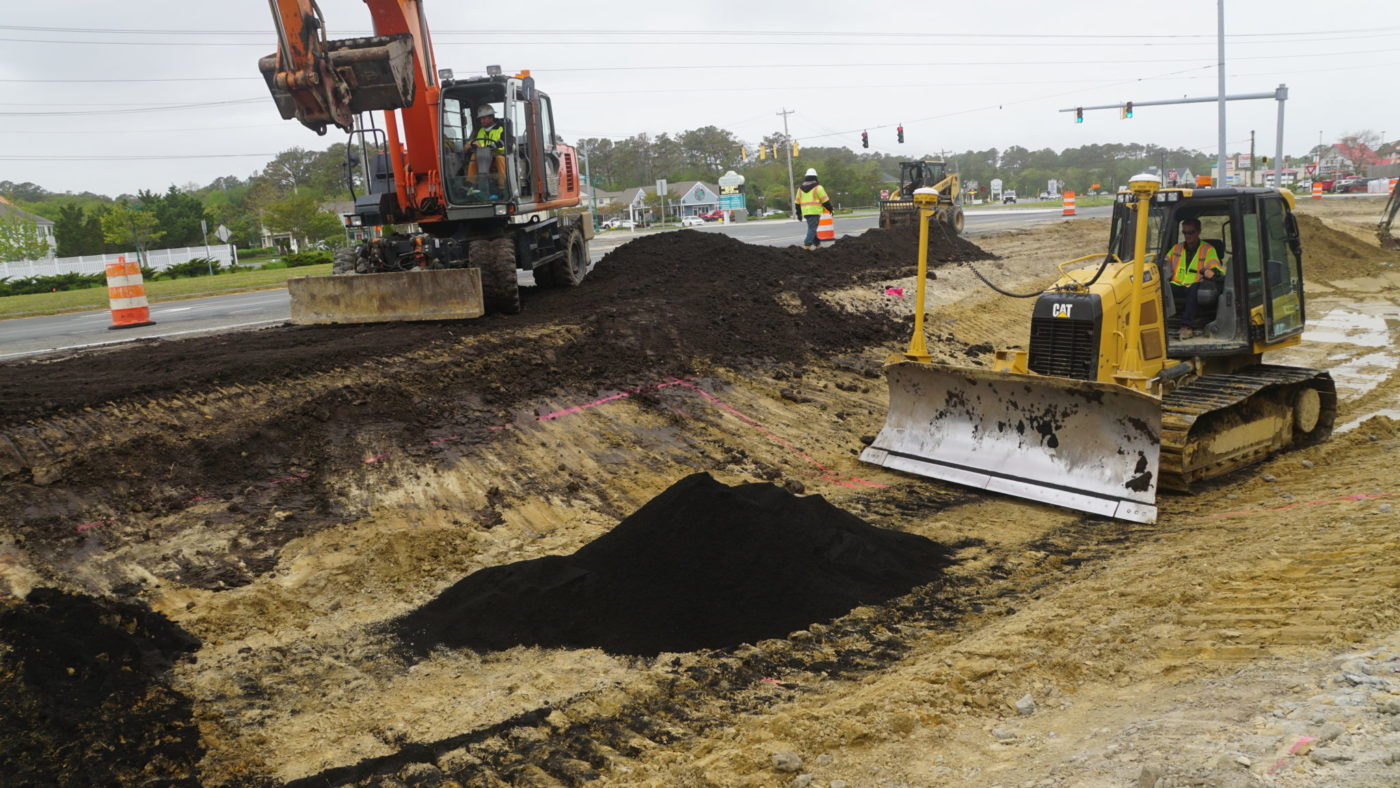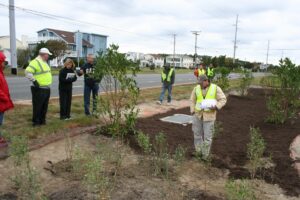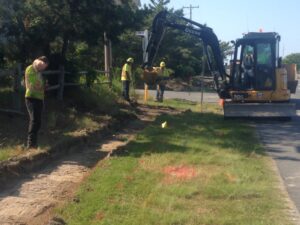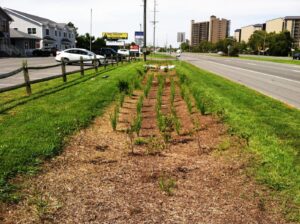The Anchorage Canal Drainage Area Stormwater Retrofit Project
A Collaborative Community Demonstration Project to Clean Up Stormwater Runoff to the Little Assawoman Bay
The coastal corridor from Dewey Beach to Fenwick Island is very developed with a high percentage of the land covered in roads, parking lots, and roofs—impervious surfaces that prevent stormwater from soaking into the ground. These communities were built prior to the establishment of current stormwater management regulations and, because of their close proximity to the Inland Bays, these areas are major sources of runoff to the Bays.
The Anchorage Canal is the northernmost canal in South Bethany and it connects to Little Assawoman Bay. Compared to other canals in South Bethany, it has a large drainage area of 125 acres, about half of which is impervious surface. High levels of nitrogen, hydrocarbons, and sediment enter the canal from the watershed which produces runoff even during light rains. Much of the runoff is collected through stormwater drains along Route 1 and until recently has been piped untreated to the canal.
Read details about the impact of stormwater runoff on the Anchorage Canal here
The canals and the Little Assawoman Bay are in poor to fair condition and experience unhealthy levels of dissolved oxygen and bacteria as described in the 2011 State of the Delaware Inland Bays report. Residents have long supported the cleanup of the Bay.




